ST. Helena and Tristan da Cunha. The Secrets of the South Atlantic Ocean
St. Helena Island
With the never-ending fear and anxiety over the deadly coronavirus, travelers continue to wonder if there will be any good time to plan a trip again. Inconveniences are everywhere. Normal routine starts to sound like a thing of the past. If travel restrictions be lifted one day, where on earth would you like to travel?
I am seriously considering to fly to St. Helena island in the middle of South Atlantic Ocean where serenity is endless and scenic atmosphere is timeless.
As of the moment, we’re trapped in the crossfire of the mad world. Social media is very noisy, news feed is flooding with nonsense post-sharing and mentally stressful news.
Dreaming to be somewhere else, to the farthest corner of the earth where tranquility is priceless and environment is very laid-back, soothes weary mind. To become an islander sounds relieving from the uproar of a crazy society.
Yesterday, with nothing much to do, I googled “What is the most isolated inhabited, castaway island in the world?”
Thought of packing my bags and move there someday 😀 My search returns two results: Tristan da Cunha and St. Helena.
Wow. Serenity!
Two islands. One gift of a lifetime: Extreme solitude.
Kept hidden from the modern civilization where electricity (in Tristan da Cunha) is still run by a diesel generator, and tucked in the middle of nowhere, with nothing in sight but blue ocean, mountains and rolling hills, life in these volcanic tropical islands sounds like a total comfort of tranquility.
This amazing discovery, however, drew tons of questions in my mind. How life goes on there? How to go there in the first place, how much the trip costs?
Remotest of all Islands
Two secluded islands in the world in the middle of nowhere. Largely isolated, and almost hidden from the modern civilization.
So remote and almost removed from the world, no enthusiastic adventurers would ever embark a visit unless the trip is a long, well-planned expedition.
And who would want to spend money in that expedition? These islands are the hardest to reach and its reputation is largely unknown to travelers. Is it safe? Is it viable to even plan a trip there?
St. Helena and Tristan da Cunha. The secrets of the South Atlantic Ocean. Shrouded by thick fog and imposing mountains, protected by rough seas and dangerous harbors and hugged by crags and rugged volcanic terrain.
When you traced these islands in the map, it looked like floating green objects in the vast ocean without anything in sight but deep blue waters and steep mountain. Yet, these dots in the Atlantic are inhabited by 4,600 combined settlers.
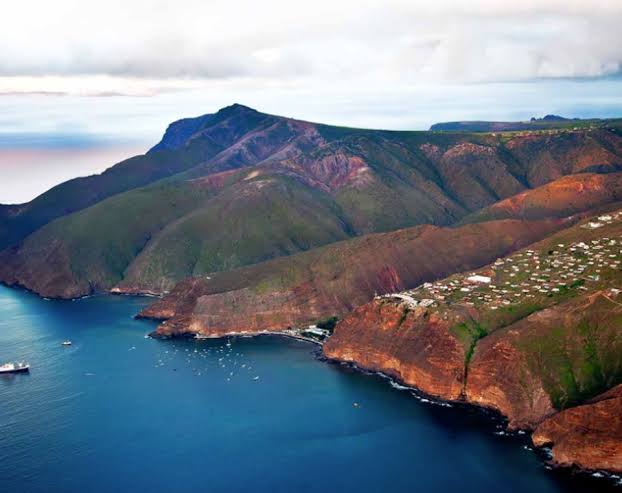
Where in the world these settlers came from? And why chose these far-flung volcanic islands as permanent homes when there's nothing else there but ocean?
The islands seem keeping a secret from the world. Where is it located?
Together with Ascension Island, St. Helena and Tristan da Cunha, form the British Overseas Territories outside Africa and North America. The islanders are British citizen and speak English. These are the farthest and hardest islands to visit due to the toughest logistics and remote location.
Tucked in the middle of the South Atlantic Ocean, the islands lie approximately 1,200 miles from the coast of South Africa and about 1,800 miles from Rio de Janeiro in Brazil. The nearest land mass is Cape Town, South Africa.
It is surrounded by active volcanoes and harsh ocean, no deep harbors, no safe beach for swimming. However, longing to live in a remote island away from the craziness of the world is so attractive in this time of pandemic, that planning an adventure to these locations sounds like an antidote to mental exhaustion.
Let’s plan a trip to the South Atlantic Ocean and discover how to get there!
ST. HELENA
St. Helena is the oldest overseas protectorate of the United Kingdom after Bermuda. Its discovery dates back from 1502 when Galician navigator, Joao da Nova, in service of Portugal, first sighted the island. He named it in honor of Helena of Constantinople, the mother of King Constantine.
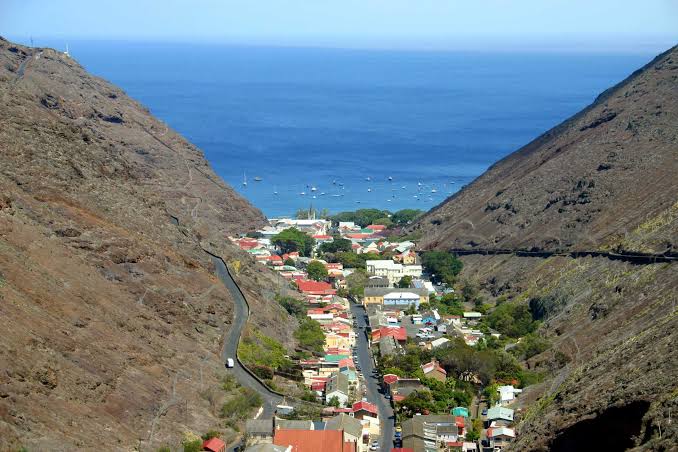
It was uninhabited when it was discovered and due to its very remote location in the South Atlantic Ocean no one ever settled in the area. It was abandoned by most conquerors in favor of other richer territories.
For more than 100 years since its discoveries, it remained hidden from the world and was used only by sailors as a stop- over during their long sea voyage crossing the Atlantic to Europe and Asia.
It became a protectorate of the British Empire in the 17th century and in 1657, the East India Company was granted by the British government a charter to govern the island. The company fortified it and colonized with planters, growing crops and vegetables and building houses.
The island capital, Jamestown, was named in honor of the second son of King Charles I, Prince James, the Duke of York, who would eventually become King James II.
It was in 1815, when the British government took a strong hold on the island, using it as the imprisonment camp of Europe’s perennial enemy, Napoleon Bonaparte.
The incarceration of Napoleon Bonaparte in the Island
In early 19th century, Corsican military commander, Napoleon Bonaparte, rose to power and declared himself Emperor of France. He dreamed of conquering Europe with military invasion, leading France against the series of coalitions in the Napoleonic Wars.
He won most of these wars, disbanded the Holy Roman Empire in 1806 and built a large empire that ruled over much of Europe, upsetting the balance of power in the continent.
The other Great Powers were so incensed with his excessive political ambition that they joined forces to defeat him in the famous Battle of Waterloo in 1815.
Napoleon was captured and the British government thrown him into isolation in St. Helena. He was put into house arrest surrounded by a heavy garrison in nearby islands of Ascension and Tristan da Cunha.
He was never to be freed again and forced to endure a lonely exile in the middle of South Atlantic Ocean. He lived in a damp house called Longwood, poorly maintained and bare. And had few staff attending to his needs.
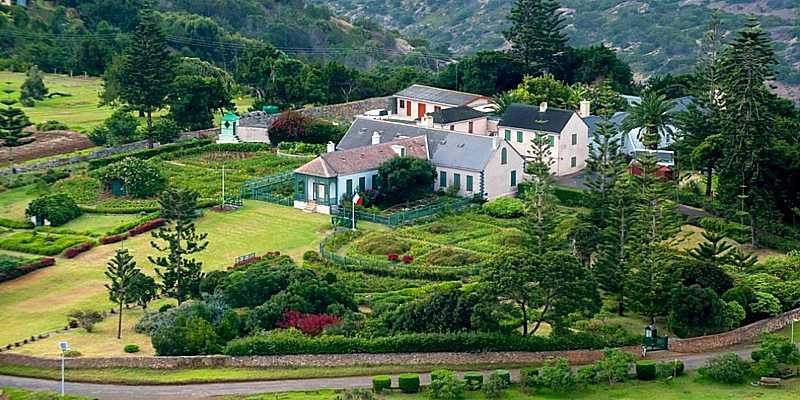
He died in captivity in 1821. St. Helena was the lone witness of his solitude. His tomb was erected in the center of the island but in 1840, French King, Louis Philippe, secured permission to take Napoleon’s remains to France.
St. Helena is a volcanic tropical island floating in the South Atlantic Ocean with an area of just 47 square miles. It is inhabited by 4,500 (more or less) population as of 2020, whose ancestors were castaway sailors, war soldiers and prisoners, slaves and farmers imported from the colonial days of East India Company.
Isolated Island for “Saints”
The island has no fancy structures nor commercial spots, it is largely an isolated place where life just goes on quietly in a day. Islanders called them “Saints”. And according to articles in the web, Saints are hospitable people, helpful to a handful of tourists.
In an effort to boost the tourism industry in the island, a luxury hotel, Mantis St. Helena, was built in Jamestown, it is a four-star hotel, and looks like a Georgian mansion, operated by the government.
Located at 1 Main Street, Jamestown, it is a 30-bedroom boutique hotel built in the original East India Company's officers' barracks built in 1774. The Hotel boasts a large restaurant, cocktail bar, guest lounge and two spacious outdoor terraces. For more information, visit Mantis St. Helena
St. Helena has intrigued tourists down the centuries, it remains mysterious to enthusiastic travelers because visiting there is extremely challenging.
Until recently, only dedicated hikers and old people ever came to visit the island, because the stay could take up to two to three weeks due to unpredictable weather that makes the sea voyage unsafe.
Napoleon’s house and his empty tomb are the most popular attractions in St. Helena but rarely documented due to sparse tourists coming to the island.
This remote island only attracts hikers, solitude-seekers, sea lovers, and history buff travelers who are thrilled to discover the actual place where Napoleon spent his final moment on earth.
Due to limited resources online about an adventure to St. Helena my research relied mostly on travel documentaries in YouTube. Thanks To Jeb Brooks video.
What to do in St. Helena
St. Helena has winding country roads rising past to misty green fields, very rural, the area has a very laid-back atmosphere. A perfect place for hikers and people who love the comfort of walking down the winding path.
But what sets apart St. Helena from other islands in the world is the thrill of adventure it offers to visitors, a quiet life above the breathtaking ocean and a unique bragging right.
At the end of the day, it's an island in the middle of nowhere that's so hard to explore. So you have a bragging right to be the very first in your country to ever set a foot in a secretive island in the South Atlantic.
It has a unique diversity of heritage-based attractions and offers many things to see and do, from its rugged coastline, rolling hills down to its breathtaking view of the vast Atlantic Ocean, an off-the-beaten path adventure awaits every visitor of St. Helena.
Life there, according to the travel documentary I watched, is so immersed in total calmness. A place where life stands still and atmosphere is timeless. What could be quieter and breathtaking than live in a place squeezed between two mountains and hoisted on the blue ocean?
St. Helena is a treasure!
Food atmosphere is largely retro like dining in someone else’s home. Crab, avocado cocktail, bread-stuffed chicken, hunks of gammon. Visitors may even cook their own fish cakes, the local cuisine of St. Helena.
Places to Visit
Coffee and Distillery. The island is home to the remotest coffee plantation and distillery in the world. The St Helena Distillery was established in 2006 and produced the island’s own ermuda Juniper flavored gin, White Lion rum, Midnight Mist coffee liqueur and Tungi spirit made from prickly pear.
Its coffee plantation is run by British couples, Bill and Jill Bolton, at Rosemary Gate. Green tipped Bourbon Arabica variety is grown in the plantation. They also have coffee shop in Jamestown. Tourists can visit the plantation through an appointment.
St. James Church – one of the oldest Anglican churches in the world.
Sane Valley – take a leisure walk along the winding path and greenery of this place where Napoleon’s grave once rested. It is, however, empty now, since Napoleon’s remains were taken back to France in 1840 by the French government.
St. Paul’s Cathedral and Cemetery – built in 1851, it became a Cathedral church of the Diocese of St. Helena in 1959, this church is surrounded by burial places of Anglicans, past Governors, Bishops, Clergy and military personnel.
Maskelyne’s Observatory – site of Dr. Neville Maskelyne’s observatory. He came to the island in 1760 to study the transit of Venus over the sun’s disk.
Diana’s Peak National Park, the Central Peaks – It rises 823 meters above the sea, it is the highest point in the island.
High Knoll Fort – built in 1874, this breathtaking fort which overlooks the entire island was built as a redoubt for island’s population in the event of an invasion.
Sandy Bay Beach – home to rusting cannons lining the beach. But unsafe for swimming due to smashing of big waves.
Plantation House – the official residence of St. Helena’s Governor as well as of Jonathan, the oldest land vertebrae in the world estimated to be 185 years old. Open for house tours.
The cenotaph Jamestown – a war memorial located at the seafront displaying names of islanders who lost their lives in World War II and names of crew members of RFA Darkdale who were killed when German submarine torpedoed the vessel during the war.
Castle Gardens – originally the gardens of the East India Company which was the first to govern the island in 1657. It has plants and flowers, fish ponds a nice area to relax and enjoy a picnic
Jacob’s Ladder – Built in 1829, the ladder has 669 steps, the top offers a perfect view of the ocean, the crags and the 47-mile island.
The Museum – exhibits local crafts, maritime and East India Company
Heart-Shaped Waterfall – located at the top of James Valley
Longwood House - now owned by the French government, this served as Napoleon’s permanent residence in the island from 1815 until his death in 1821, now converted into a museum.
Where to Stay
Currently, St. Helena has a four-star hotel called Mantis St. Helena, a luxury boutique hotel located in the capital with cocktail bar and restaurant. It's operated by the government.
However, there are beautiful guest houses, and bed and breakfast inns available for visitors. Some of the recommended places are the following:
Farm Lodge – the course meal is said to be the best in the island
Wellington House – Food meals are served in a retro set-up, grand old dining room
Harry’s Guest House – meals start at £15
Consulate Guest House - B&B Guest House simple but very comfortable located in a residential area of the town.
Bertrand Cottage - Fans of the great outdoors may want to stay in this Cottage, a three-room upmarket bed and breakfast located near Longwood House.
Activities
- Dolphin-watching
- Walking along 21 postbox walks in varying level of intensity
- Hiking
- Excursion to Briars Pavilion (owned by the French government) where Napoleon stayed upon arrival in the island.
- Snorkeling and diving
- Walking tour around the capital of Jamestown with its historical Georgian architecture
- Guided road trip
- Bird watching
- Island Tour
- Cooking lesson with Derek and Linda where they will show visitors how to mince fresh South African tuna
Full island tour that lasts 5 hours are being offered by tour guide and travel proprietors in the island. It is a great way to view the entire St. Helena.
Tours and Excursions can be arranged through the tourism office. All tours available are planned and enable visitors to view the island’s fantastic landscapes, its rich history and people.
Sample Tour Package
Aaron Adventure’s Tour: Package includes Napoleonic Tours, Sandy Bay Beach Tour (Aaron Legg Tel +(290)-23987 or +29061597
Green Wagon Tours – Package: Napoleonic Experiences, Scenic Island Excursion cost from £25.00 Blue Moon Cottage, Blue Hill 29024415
Larry’s Island Tours – offers custom island tours. Jamestown on to Sandy bay. Cost £35-60 max 4 persons prop: Larry Johnson Two Gun Saddle, Alarm Forest 29024187,29065320
Enchanted Isle Limited – Dolphins Trips, coastal trips, whale shark trips, +29061366 owner: Jonathan Herne
For complete list of tour packages, please visit St. Helena’s tourism office website: St. Helena Island's Tourism Office
How to get to St. Helena
Getting to St. Helena is an adventure itself. Until 2017, St. Helena can only be reached by sea with its lone shipping line, the RMS St. Helena, sailing on a weekly basis from Cape Town, South Africa.
lone flight to St. Helena from Johannesburg, South Africa
In October 2017, the island finally opened to the world with its newly built airport financed by the British government.
It is dubbed as the most useless airport because flight schedule is only once a week, every Saturday, and served only by one airline company, SA Airlink Airline, a subsidiary of SA Airways, a South African carrier.
The Most Useless Airport In the World
St. Helena is home to the most useless airport in the world, and one of the most dangerous. There’s only one scheduled flight to and from the island, every Saturday only via Johannesburg, South Africa, served by SA Airlink Airlines.
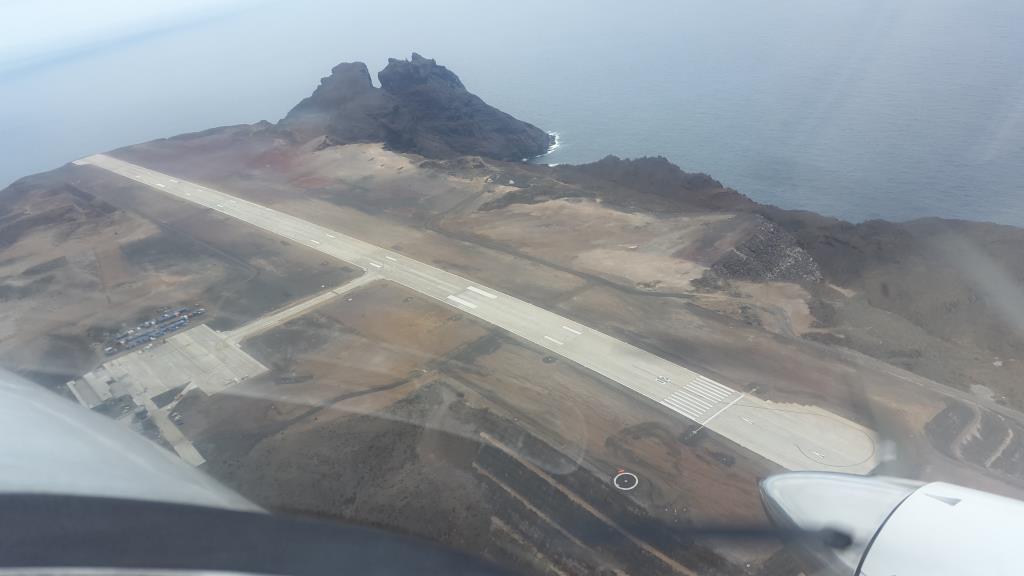
SA Airlink is a regional airline based in Johannesburg, South Africa. It is privately-owned and its main activity is to act as a feeder airline between small towns and larger hub airports.
St. Helena Island's airport is one of the most dangerous in the world due to the position of the runway. It is built above a rugged terrain facing the open sea where gushing winds slammed on the cliff, making it hard to maneuver a landing and takeoff.
Even pilots described the landing during test flights as hair raising and passengers were screaming.
Utilizing an Embraer E190 aircraft, a 99-seater jet but can only be filled by 76 passengers to make it lighter for landing. It is manned by a high skilled pilot trained to fly an aircraft under an unpredictable weather condition above the Ocean.
Duration of travel is around six hours and 15 minutes because the plane will fly to Walvis Bay, Namibia to refuel in case of inclement weather in the island which forces the plane to return to Johannesburg or take an emergency landing at nearby Ascension island.
The airport is not conducive for landing, gushing winds rolling from the open seas and slamming to the cliff side which change direction and speed of the plane in a split second.
The aircraft has to grind down through thick clouds and gusty winds. The travel is so dangerous only seven pilots with special training are certified to fly on the route.
However, St. Helena wanted to get rid of this name of being the most useless airport in the world and planned to expand flight schedule in the future.
VIA AIR
The easiest way to get to St. Helena is by air. Travelers need to be at Johannesburg, South Africa to catch the flight. SA Airlink is the only airline to serve the route to St. Helena.
Booking should be made through SA Airlink website and Solomon’s Shipping and Travel Agency at the Malabar in Jamestown in St. Helena. Visit SA Airlink website here. Estimated return flight is around 804.00 (GB Pound Sterling)
VIA SEA
RMS ST. Helena, which was launched by HRH Prince Andrew, the Duke of York, in 1989, was the only cargo/passenger vessel serving St. Helena.
Travel by sea takes six days (one way alone). In 2018 February, the vessel was decommissioned, sailing his final voyage to Cape Town on February 10, 2018.
The island can also be reached through a cruise ship or yacht but this option is very rare. For DIY travelers the only way to reach the island is through SA Airlink.
Cruise ship season starts from October to April. For information visiting cruise ships please contact: Solomon’s Shipping Office St. Helena email: shipping.manager@solomons.co.sh
The island has only one harbor, James Bay, the rest of the coast is swept by towering rocks and crags. Even swimming is unsafe.
Getting Around St. Helena
Hire a car – renting a car in the island is relatively inexpensive according to online articles. Usually around £20 a day. But the driving can be quite challenging due to winding paths. Renting a car can be arranged through the tourism office.
Guided Tour – this is the most hassle-free arrangement in getting around St. Helena
Public Transport – The island has taxi and public transport service, the cheapest way to go around the island.
Is Visa Needed?
It depends on the passport issuing countries of the travelers if it's included in the list where visa is needed. Travelers need to check if their countries are part of the required territories to provide visa.
For example Philippines is one of the passport issuing countries where citizens need to apply for a travel visa when visiting St. Helena. Application is through online. Visa application fee costs £50 non-refundable. Validity is 6 months.
See if your passport issuing country is exempted with this requirement or if you need a travel visa during your visit. Check this link on how to apply an e-visa for St. Helena. https://evisa.sainthelena.gov.sh/do-i-need-e-visa/
Budget Going to St. Helena
The island has no ATM. The only way to get cash is through an over-the-counter withdrawal from the bank in Jamestown or near the airport. So take cash with you. St. Helena’s currency is Pound Sterling (£).
A return ticket of SA Airlink from Johannesburg costs £804.00 per person, roughly US$1,100 (roundtrip airfare alone)
Upon arrival, short-term visitors (less than six months visit) are required to pay an entry fee of £20 at St. Helena immigration in cash only. Children below 12 years old are exempted. Currencies accepted: British or St. Helena’s Pound, South African Rands, Euro, US Dollars.
If you're staying in the island's lone luxury hotel, per night costs you £150.00 with free airport transfer and complimentary breakfast. Other guest houses with complimentary meal, rates range between £60 to £120. Self-catering form of accommodation however is cheaper, for rates, owners should be directly contacted.
Please visit St. Helena's tourism website for lists of guest houses and Self-catering inns. Link is at the bottom of this article.
Upon Arrival
Immigration personnel will provide visitors with an information pack, for more information, visit the tourism office of St. Helena, the Canister, Jamestown www.sthelenatourism.com enquiries@tourism.co.sh +29022158
This eight-mile island was first sighted in 1509 by Portuguese navigator, Tristao da Cunha, but settlement was only established in the 19th century when the British government used it to put a heavy garrison that would keep an eye on Napoleon Bonaparte.
Edinburgh by the Seven Seas, the only settlement in Tristan da Cunha
The military personnel guarded the island in case French army would attempt to rescue Napoleon Bonaparte from nearby St. Helena. After the death of Napoleon in 1821, most of the soldiers stayed behind, perhaps fascinated and drawn with the charm and tranquility of Tristan.
The island, a cone-shaped mass of rock that rises to a height of more than 6,700 feet above sea level, appears like a floating iceberg in the South Atlantic Ocean.
Beneath the towering flanks of an active volcano, a cluster of low-slung structures with red and blue tin roofs rose on a narrow glass plateau overlooking the ocean.
Over 92 years, the island attracted more settlers, mostly whale watchers, shipwrecked sailors, women from St. Helena, and those who chose to live in isolation for the rest of their lives.
As of 2020, Tristan da Cunha has 70 families, 260 estimated population descended from early settlers. The island is so small, families only have seven surnames: Glass, Swain, Hagen, Green, Repetto, Lavarello and Rogers. The collective spirit that sustained the island during years in complete isolation still exists today.
They are making a living through crayfishing and a tiny tourism industry. In addition to farming, residents earn their living by selling souvenirs, handcrafts and rare postage stamps online.
The Most Isolated Island in the World
Tristan da Cunha is arguably the remotest inhabited island in the world, even more isolated than St. Helena. When you google the question “What is the most isolated, most remote island in the world”, it would come back only one result – Tristan da Cunha.
It sits in the remote sea in the South Atlantic roughly equidistant from South Africa and Brazil and about 1,500 miles from its nearest neighbor, the island of St. Helena.
It is so far-flung, the island can only be reached by boat from Cape Town, South Africa, no other way. Sea voyage takes up to six days.
It has only one settlement called Edinburgh by the Seven Seas locally known as The Settlement. It is home to 70 families, roughly 250 islanders, all hold a British citizenship just like the Saints.
In the middle of the island stood Queen Mary’s peak, an active volcano, with last recorded eruption in 1961. During the eruption, all the residents were evacuated to Southampton, England, but two years later, they requested to be taken back to Tristan because they preferred a life in a quiet island.
I feel them 😁
Tristanians withstood the test of times and still prefer to settle in lonely island than anywhere else. The gift of solitude and serenity truly the best thing of all.
Unlike St. Helena, Tristan da Cunha has no airport, no restaurants, no guest houses, no deep harbor. Electricity is only powered by diesel generator.
It is a great escape from the madness of the world, the calmness brought by the ocean and laid-back environment can never be replaced by the noise of urban living.
Reaching the island is a difficult journey, an extreme adventure. Boat takes travelers to the island in six days and the same boat will take them back to Cape Town in a week or more, depends on the weather.
It is not a typical island vacation where tourists enjoy the amenities of a posh accommodation or have some terrific moments laying in the sand, watching the splashing of the waves and wait for the sunset to come.
It is, however, a retro experience, strewn into deep isolation. Visitors cannot take swimming because beaches are covered with crags lapped by strong waves from the Atlantic.
Credit cards are not accepted, months bring so much rain and in the middle of the island stands an active volcano that stretched down to the ocean bed.
Getting Around Tristan
The island has no deep harbor, travelers sometimes left no choice but to climb down a rope ladder into a waiting dinghy bobbing wildly in the waves or hauled off in a metal cage dangling from a crane, a real adventure if you are looking for one.
The island has no posh spots but there’s a pub, The Albatross, opens only for just a few hours in a day or before the diesel generator is turn off.
There’s a shop selling everything from basic supplies to homemade crisps and hand-knitted Tristan beanies.
The island’s special cuisine is mostly potato-stuffed dishes. Stuffed mutton – a deboned leg of lamb filled with potatoes and seasoning – is the prized meal which served on feast days like Christmas.
What to do in Tristan
So what awaits tourists in a castaway island where life just revolves around the rugged plateau and no real tourist feel activities?
Tristan da Cunha entices adventurers however, especially those who seek for solitude and extreme isolation from the maddening world.
The island’s lone narrow road and winding path is flanked by bungalow-style cottages, potato patches and roaming cows. A perfect place to relish serenity and peace.
There’s a grocery store in the island but orders must be placed months in advance so the goods can be loaded to a scheduled fishing vessel traveling in and out of Tristan.
Bad weather can cause delay so travel time may run to two or three weeks or even a month! But there’s a hospital and dental clinic taking care of the islanders.
Truly, an island where a traveler’s goal is to step back in time. The challenge lies in getting there. Travelers hop on board via a cargo vessel from Cape Town and make an arduous six-day voyage on rolling waves crossing to the world’s most isolated inhabited island.
On board this vessel, amenities are scarce, there’s only one bathroom shared by passengers, but meals are served on board.
Outdoor pursuit is what awaits every courageous traveler to Tristan. Hiking routes follow a trail to the majestic Queen Mary’s peak, or a walk around the potato patches where the island’s crops and vegetables are grown.
How to visit Tristan
No visa is required going to Tristan. But the visit is not an easy adventure. The travel plan requires an approval from the island’s council by visiting the website www.tristandc.com to apply.
Access here the terms and conditions travelers need to comply and do when applying a visit permission from Tristan da Cunha's council.
Travelers must send an email to Tristan's council, detailing the purpose of visit, dates of travel and plan of departure. The council may require a police certificate or any clearance from the country of origin that the traveler has no criminal records.
How to get to Tristan
Tristan has no airport. The access is by the sea only. There are three ships making a nine return trips to Tristan every year. Travelers must catch the schedule of these trips from Cape Town, South Africa.
MFV Geo Searcher, MFV Edinburgh and MV Baltic Trader are operated by Ovenstone as part of a contract to run the Tristan fishery, and the fourth, SA Agulhas II is operated by the South African Government as part of a contract to lease Gough Island as a Meteorological Station.
The trip must be booked either with SA Agulhas (trip is every September only), a South African polar research vessel (US$1,300 with free meals) or with other three fishing vessels traveling to the island: Edinburgh and Baltic Trader, one way trip costs US$800 with free meals.
For more information how to catch the schedules of these vessels, including updated rates boarding the vessel, visit: Tristan da Cunha regular ships
Ocean-going vessels cannot dock on the shallow harbor of Tristan, islanders who need to retrieve package and supplies need to ferry out from the settlement to the anchored ship.
Getting Around Tristan
By Foot – the most common method of getting around Tristan is by walking and hiking. The island is perfect for walkers and hikers due to its rugged terrain and winding paths.
By Local transport. Bus is available from the settlement to potato patches but no rent a car in the island.
What to do at Tristan
The island organizes fishing excursions, climbing, walking and golf. A guided excursion to nearby Gough Island and Nightingale island is also organized for sightseeing, bird watching or trail hiking.
Hiking at Queen Mary’s peak and climbing at its summit require a guide, rate is around £200 for a trip to the peak and £120 for two guides.
Social events are held at Prince Philip Hall Community Center (named after Prince Philip, the Duke of Edinburgh, who visited Tristan in 1957), where dances are organized on special occasions.
A visit to a fish factory is another activity for visitors in Tristan.
Places to Visit at Tristan
Cafe da Cunha - For eat and drink there’s a Café da Cunha that serves short meals and hot/cold drinks located near tourism center
The Albatross Bar – the only pub in the island and open only evening of Monday to Saturday.
Thatched House Museum - located between the east of the settlement and the 1961 volcano. It is a traditional Tristan cottage built from volcanic rock and thatched with New Zealand flax. It was opened in 2012 and available for overnight stays.
Potato Patches - The island's farm where potato, vegetables and other root crops are grown. It is one of the most beautiful and relaxing areas at Tristan during afternoon and sunrise.
Love Island - Queen Mary's Peak at Tristan is a mecca for lovers. It offers a stunning view of its heart-shaped crater lake. Why it is called Love Island? According to Tristan's website, it is because reaching the peak is a labor of love, it is a perilous hike that can only be undertaken during longer visits in good weather and with the help of local guides.
The islanders knit traditional love socks threaded with colored stripes that convey hidden romantic messages for loved ones. From Tristan's tourism website. Visit HERE for more.
Post Office and Prince Philip Hall - Handcrafts and souvenirs are available here.
Accommodation
No hotels or hostels in Tristan, accommodation is arranged through home stays (full board £50 per person per night) or self-catering houses (£25 per person per night) plus utility charges.
Full board includes room and meals while self-catering only covered room per night, visitors will have to cook their own meals. 75% of the charge is paid to the island family that owned the home and 25% of the charge is paid to the government.
There’s an internet café in the island and payphone but no wifi connection, no mobile phone network also. To access the internet, visitors need to go to the internet cafe.
Post office is available in the island but islanders warned visitors that your post mail will likely travel back with you on the same ship you are due to schedules.
Just like St. Helena, Tristan da Cunha has two churches: St. Mary’s Anglican Church and St. Joseph’s Catholic Church.
For more information on accommodation at Tristan, please visit THIS LINK
Planning a Visit
Exploring Tristan da Cunha and St. Helena Island is a very challenging adventure for every traveler. Travel plan must commence a year ahead. There are logistics need to do before the scheduled trip.
Check the following websites of the islands for detailed information how to visit the island, including the tour packages and estimated cost of the trip.
Sources of this article:- Julia Buckely, The Independent UK
- Andy Isaacson, National Geographic Travel
- Jeb Brooks YouTube
- Lucy Corne, The Lonely Planet
- Redfern Natural History Production









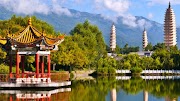



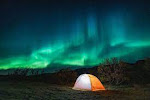


0 Comments